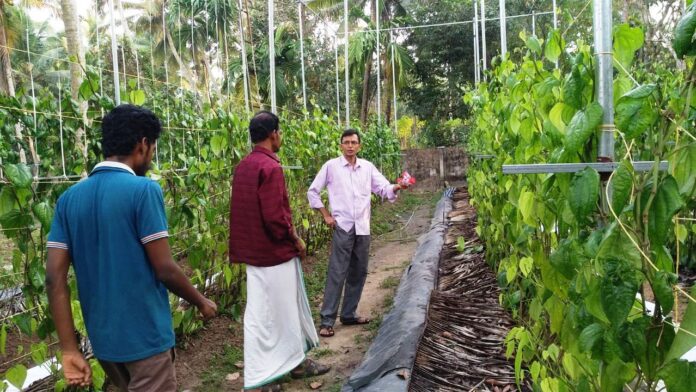Mr. Mohanan is a middle aged gulf returnee, hailing from Thazhava, a bordering village to Alappuzha. He ventured into betel vine cultivation and often relied upon the advices of his fellow farmers. During January, 2019 his vines were affected by a leaf ‘disease’ and taking the fellow farmers’ advice, he destroyed 3 full rows of plants comprising of more than 120 full grown and ready to harvest stage vines losing about Rs. 25000/-. But even after that there was no control for the same and hence he approached the KVK. KVK expert visited his field, collected specimen and confirmed that the damage was by Helopeltis theivora, a notorious pest of tea and cashew. The nymphs and adult bugs suck sap from leaves, especially tender leaves causing discoloured, water soaked lesion all over the leaf surface. The lesions will dry up later and in severe cases leaf falls off resulting in yield loss. Most of the betel vine farmers, like his fellow farmers, misjudged the symptoms as that of common fungal diseases.
He was given an ad hoc recommendation of neem oil soap spray @2ml/l on leaves after harvesting and removal of affected leaves and to continue the practice for next two months.. The spraying was done to the nearby bushes also. The farmer was convinced about the pest attack as he was demonstrated the feeding of the bugs on leaves in captivity. As he could identify the pest correctly, physical means of pest management was also adopted by collection and destruction of the pest.
The intensity of the pest infestation was reduced drastically after 2 months. The no. of damaged leaves per bundle could be minimized to 3 leaves from the initial 14. Profit could be raised from Rs.700/- to 1500/- per week. Yield also improved from 0.5 to 3.0 bundles /week. The knowledge and management practices were adopted by the nearby farmers also. The information was disseminated to other betel vine growers through mass contact programmes, publications etc.









